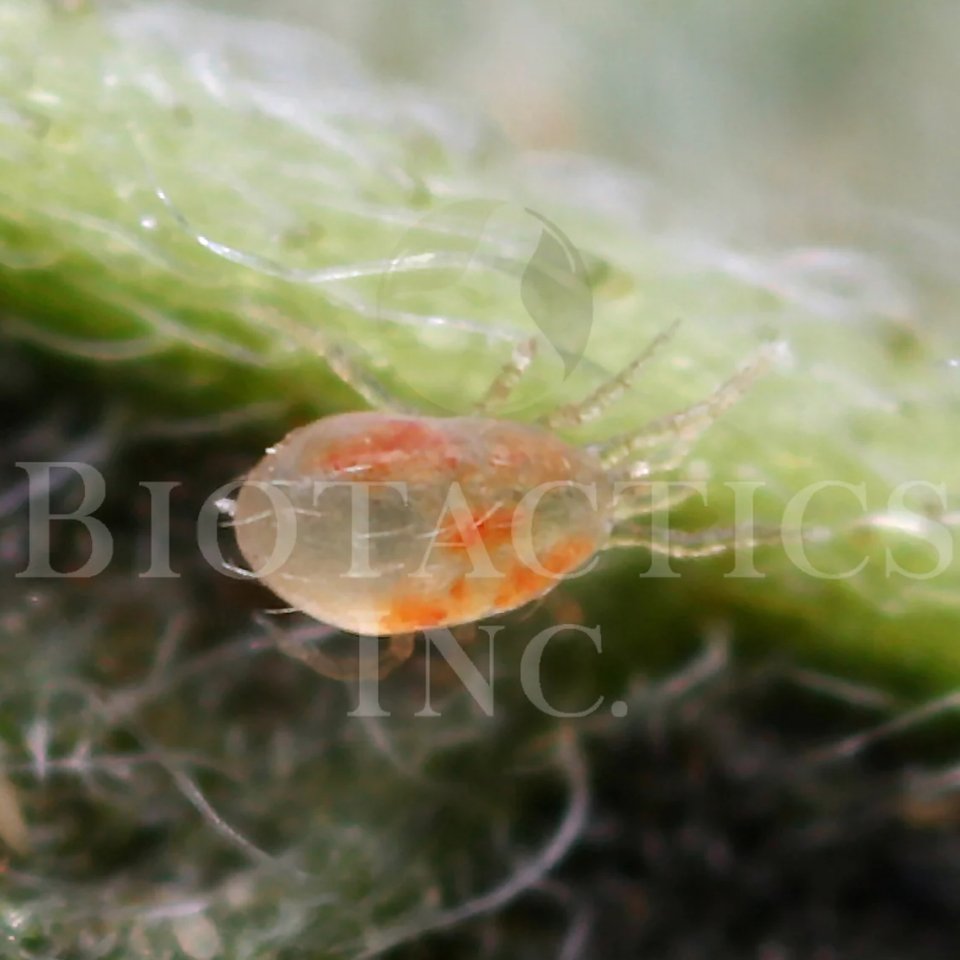
Galendromus Occidentalis predatory mites
Mark AshworthShare
Identification:
Galendromus Occidentalis are only positively identified under magnification due to their resemblance to Neoseiulus californicus and Neoseiulus fallacis mites.

(Image Courtesy Biotactics, Inc)
The adult female is slightly larger than the male at roughly 1/70 inch, the body is wider in the rear and then it tapers towards the head. They are generally an opaque white color, but will change colors depending on what they prey upon.
The larval stage has a a wedge shape and three pairs of legs (6-legged) and the nymph phases have 4-pairs of legs.
We always recommend diversity, and predator mites are no exception. Check out our combo-packs of Neoseiulus californicus and Galendromus Occidentalis
Purpose:
Galendromus Occidentalis mites is a remarkable fix to the hemp russet mite issues that have been ravaging cannabis cultivation. Further, they are also a predator to Two-Spotted Spider MItes, European Read Spider Mites and Tomato Russet Mites.

Galendromus Occidentalis is used widely in the fruit industry specifically against apple rust mites in warmer, drier climates. In apple orchards of such climates, Galendromus Occidentalis populations will manage themselves based on the amount of prey species, environmental conditions and potential side effects from toxic pesticide use.
Using Galendromus Occidentalis predator mites is truly only effective in low-humidity outdoor climates as well as indoor operations where the temperature and humidity can be effectively controlled. For indoor hemp russet mite elimination, there is not a better option than Galendromus Occidentalis.
Life Cycle:
Depending on what their food source is and where it is located, Galendromus Occidentalis females will emerge and relocate wherever prey sources are. Over the course of their ~30 day life span, they will deposit roughly 21 eggs which will hatch in 1-4 days, going through a larva and two nymph stages.

When there is a good food source and ideal environmental conditions, Galendromus Occidentalis can develop rapidly and go through multiple different generations. During the fall, some females will descend from the foliage to overwintering spots (like tree bark) while other will fall with the leaves into the soil/mulch layer to overwinter.
Looking to get Neoseiulus californicus into your garden, greenhouse or grow tent? Snag a sachet (Biopack) or Biovial here!
